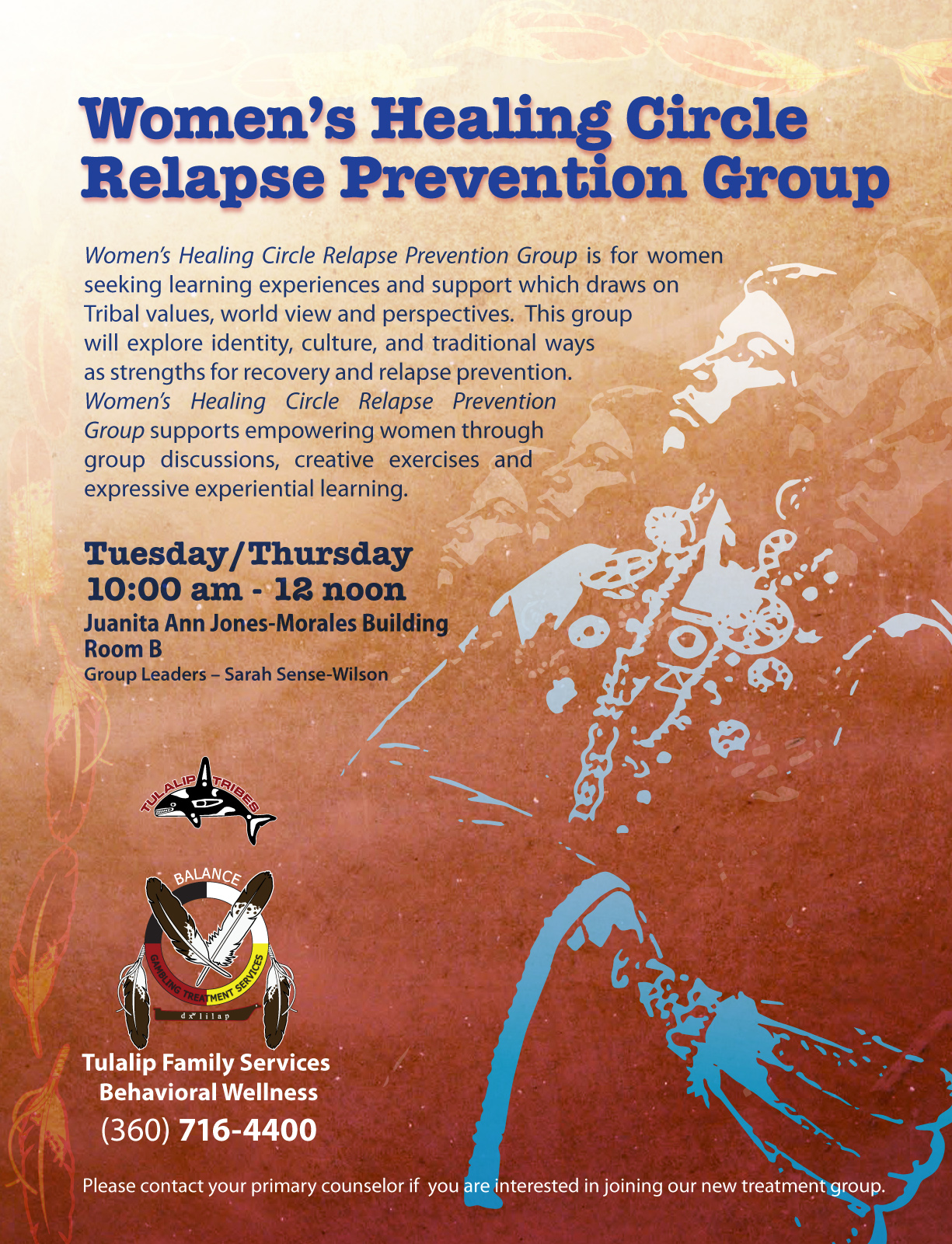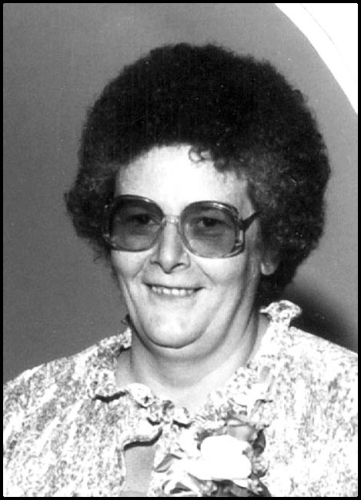Month: November 2015
Quinault Indian Nation Opens 2015-16 Crab Fishery
- Quinault tribal crabbing boat, photo by Larry Workman, Quinault Tribe
Source: Water4fish@comcast.net
TAHOLAH, WA (11/19/15)—“Count on it! Quinault crabs are safe to eat and they are delicious!” said Fawn Sharp, President of the Quinault Indian Nation.
The Tribe opened its crab fishery today in Grays Harbor and the adjacent ocean area, one of the few areas spared by a giant toxic algal bloom which formed off the coast in May. It has been the largest such bloom in recorded history in both severity and magnitude.
“We have been very fortunate to be spared from the impacts of this bloom and the domoic-acid it produces,” said Sharp. “Many of our fishermen depend on crab as well as other fish for sustenance and income. But our priorities are to protect these resources, so our people are safe, others who consume our fish and shellfish are safe and we are doing everything possible to provide for the needs of future generations,” she said.
The Quinault crabs are being tested regularly to be certain they are safe for consumption by the Tribe and others. Samples are also being tested weekly by the State Department of Health, as requested by tribes and agreed to in a consent decree, part of the Rafeedie Decision of 1994, a U.S. v. Washington federal court decision.
Quinault Indian Nation Fisheries Policy Spokesperson Ed Johnstone said the Tribe’s decision to open the crab fishery was made after it reached agreement with its co-manager, the State Deparment of Fish and Wildlife that conservation thresholds could be met. “The Quinault Nation has always managed all of its natural resources based on conservation, on perpetuation of the resources and after considering all commitments to health and safety,” he said. “We always go the extra mile to assure that our fish are safe to eat. The QIN is a party to a fish health decree signed by the state and the Tribe and it commits us to sound and safe health controls associated with the consumption of our seafood, shellfish specifically. We test according to the protocols adopted as standard practice, but since there is a great public concern the seafood processing and sales corporate arm of the Quinault Indian Nation has committed to doing weekly tests of our shellfish to insure prompt and swift consideration any actions necessary.”
“This algal bloom is a very big deal and we are paying very close attention to it,” said Joe Schumacker, Quinault Marine Resource Scientist.
Scientists suspect that this year’s unseasonably high temperatures have played a major role in the outbreak of this bloom, along with something they call “the blob” — a vast pool of unusually warm water that blossomed in the northeastern Pacific late last year. The blob has morphed since then, but offshore waters are still about two degrees warmer than normal, said University of Washington climate scientist Nick Bond, who coined the blob nickname.
“But the inspection process being implemented with the Quinault crab fishery is very thorough, and because waters in the Quinault usual and accustomed fishing areas have been spared, people will have crab they can safely eat,” said Schumacker.
“That is our commitment,” said President Sharp. “If the product is from Quinault, you can count on it being safe to eat.”
Tulalip Tribes Problem Gambling Program evening class
Tulalip Tribes Family Services is excited to announce we are now offering evening class for Problem Gambling treatment. Our Evening class will be facilitated by Steve Gardner CDP, WSGCC-I. The class will be held on Thursdays starting on December 3rd, 2015 at 4:00-7:00pm. This intensive psycho-educational group will focus on basic knowledge of Gambling addiction, and learning coping strategies for relapse prevention, and developing financial management skills. To enroll in the class you would need to contact Tulalip Tribes Family Services at 360-716-4304. Our services are free and we are state certified, trained, experience, licensed counselors.
Our Problem Gambling mission statement ‘Our goal at Family Services Problem Gambling Program is to assist individuals, and family members through the recovery process; guiding them to resume their life with a renewed sense of balance, health, responsibility and purpose’. In addition, Tulalip Tribes Family Services P.G. program provides a variety of counseling services including; Family Counseling, Couples counseling, Consultation, Monthly Family Night, Referrals, Education/Outreach, Assessments and Women’s Healing Circle Relapse Prevention Group. Our services are culturally based, culturally responsive and client centered. Contact us if you would like more information or if you are interested in a presentation for your department or group. 360-716-4304 or Washington State Helpline at 1-800-547-6133
November 25, 2015 syəcəb
Women’s Healing Circle Relapse Prevention Group
Safety fair benefits kids from Boys and Girls Club
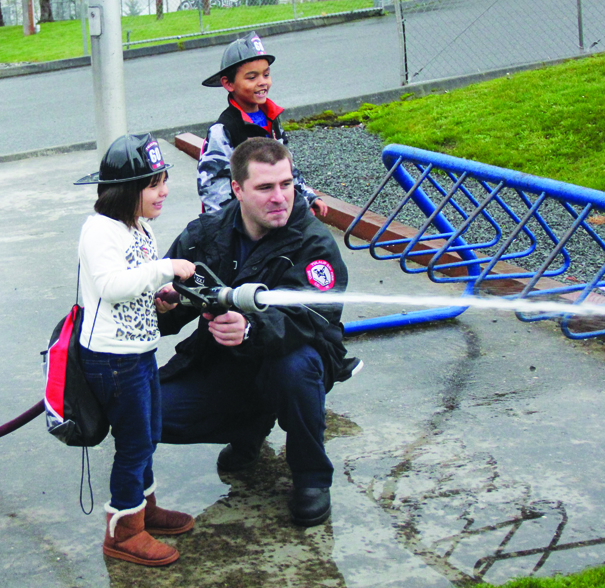
Photo/Micheal Rios, Tulalip News
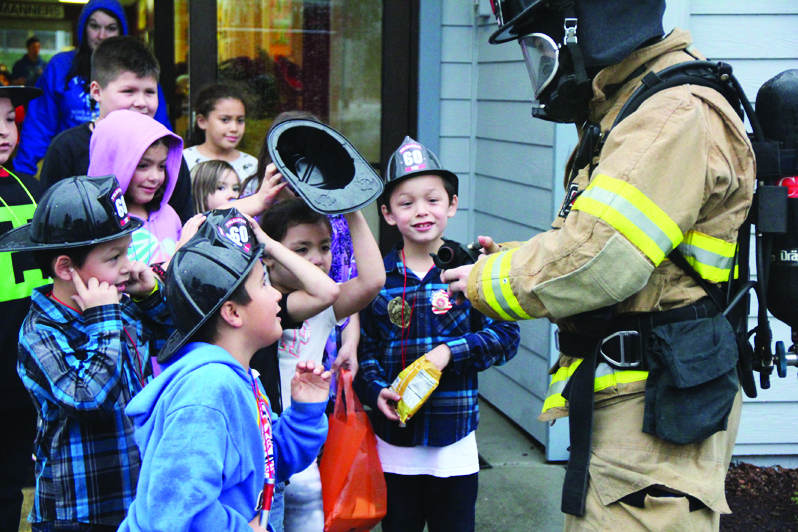
by Micheal Rios, Tulalip News
Hundreds of kids from the Tulalip Boys and Girls Club learned how to be prepared for emergencies at a health and safety fair held on Friday, November 13. The day of fun-filled, educational activities was in response to a large wind storm that knocked power out in major parts of the Tulalip Reservation only weeks ago.
The fair included services and education from various departments within the Tribes’ network, including the Health Clinic, Police Department, and Youth Services.
The theme behind this year’s safety fair was to have children and their parents prepare for emergencies with educational fun for the whole family.
The Red Cross was on hand to oversee their ‘pillowcase project’, where kids ages 3 and up receive a pillowcase to build their own personal emergency supplies kit. Kids 5 and up were taught compression CPR by a professional team who provided video tutorials and hands-on learning tools for the youth.
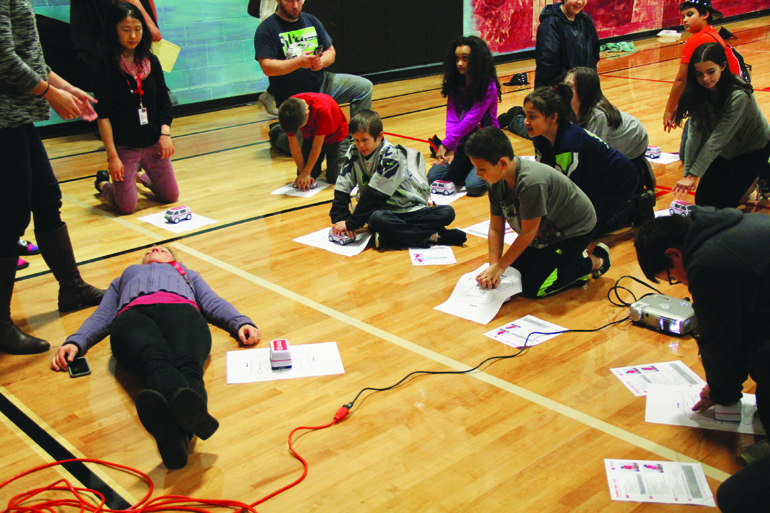
Photo/Micheal Rios, Tulalip News
Washington Poison Center representatives were on-hand with their Mr. Yuk mascot and resources. They provided information about poisonings and toxic substances to the children by way of a spin the wheel game. For each spin of the wheel, a child would be asked whether a certain item was poisonous or not if digested/inhaled, and prizes were awarded for correct answers. For incorrect answers, the Mr. Yuk representative would explain to the child how the item was poisonous and potential effects if digested/inhaled.
Highlighting the safety fair was the presence of Snohomish County Fire District 15. Children lined up by the scores to meet the firemen, sit in the firetruck and use the fire hose to blast water at safety cones.

Photo/Micheal Rios, Tulalip News
“It’s important for the kids to hear it come from people besides us,” says B&GC administrative assistant Diane Prouty on the importance of the safety fair. “We want them to hear it from the professionals, so that they know what we say is true. And that they listen when we talk to them about the different kinds of safety, whether it be bus safety or fire safety. We just want to make sure that all children in our community are safe and that they have the opportunity to learn it right here at the club.”
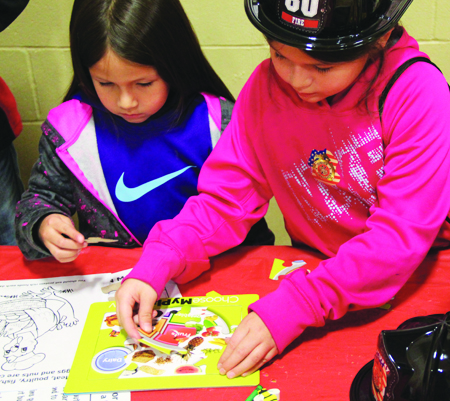
Contact Micheal Rios, mrios@tulaliptribes-nsn.gov
Tribal Court Assessment Community Meeting
Agency to remove art by Native American activist prisoner Leonard Peltier

The paintings were done in prison by Leonard Peltier, 71, a Native American activist who is serving two consecutive life sentences in the deaths of two FBI agents during a 1975 standoff on the Pine Ridge Indian Reservation in South Dakota.
The works were hanging near the front doors of the state Department of Labor and Industries’ headquarters in Tumwater, Washington, and part of an exhibit to mark National American Indian Heritage Month, KING-TV in Seattle reported (http://goo.gl/ckVGrA ).
An association representing retired FBI agents demanded the state agency remove the paintings.
“He’s nothing but a thug,” said retired FBI agent Ray Lauer. “He’s an unrepentant cop killer.”
Lauer is a member of the Retired FBI Agents Association, which wrote a letter to Labor and Industries demanding the paintings be removed.
“For the state of Washington to use taxpayers’ dollars to basically offer a free art gallery to somebody who is a convicted cop killer, I find it, as a law enforcement officer, appalling and quite frankly disgusting as taxpayer also,” Lauer said.
The state agency said it will replace the paintings this week with other artwork.
Displaying the work wasn’t meant as an endorsement of Peltier’s cause, said Tim Church, a state Labor and Industries spokesman. It was simply meant to be about Native American art, he said.
“We feel badly about the impressions that they’re taking from it. We truly do. That was in no way our intent,” Church said.
Peltier’s case has been a source of protest over the decades.
His son, Chauncey Peltier, said there is no evidence his father killed anyone. He has been exhibiting his father’s paintings around the country to raise awareness about his father’s attempt to gain a presidential pardon.
Carolyn Ellene Cepa
Carolyn Ellene Cepa, 77, of Tulalip, Wash. left this earth to be with the love of her life, Lloyd on November 10, 2015. She was born November 25, 1937, in Seattle, Washington.
She worked as a certified nurse assistant at Bethany in Everett, WA. Her children were her pride and joy.
She is survived by children, Tom Drake, Scott Drake, Rosalie Miller, Stacy Wallace, Martin Cepa, Adam Cepa, and Carolyn Cepa; 13 grandchildren; and five great-grandchildren. She is preceded in death by her husband, Lloyd Cepa and her daughter, Tinka Marie Cepa; and best friend, Virginia Brumbaugh.
Funeral services will be held Tuesday, November 17, 2015, at 10:00 a.m. at the Tulalip Tribal Gym with burial to follow at Mission Beach Cemetery. Arrangements entrusted to Schaefer-Shipman Funeral Home.
Teaching the next generation of Lushootseed speakers
By Chris Winters, The Herald
TULALIP — Last Thursday, the children in Sarah Poyner Wallis’ kindergarten class at Quil Ceda Tulalip Elementary School filtered in after the morning assembly.
Maria Martin and Nik-Ko-Te St. Onge, teacher assistants with the Tulalip Tribes’ Lushootseed department, wish the kids good morning.
“haʔɬ dadatut,” they said. The children said it back to them.
The kids sat in a circle for their first lesson: a song, simply called “Hello Friend,” and sung in Lushootseed to the tune of “Frère Jacques.”

With the help of flash cards, kindergartners at Quil Ceda Tulalip Elementary School speak the Lushootseed language with instructor Nik-Ko-Te St. Onge. From left: Jaycee Williams, Jesse Lozano,Tyler Hills and Joscelynn Jones-Lloyd.
For years Tulalip children have received lessons in their ancestral tongue at the Tulalip Montessori School and the Betty J. Taylor Early Learning Academy on the reservation. The written form of the language includes characters found in the International Phonetic Alphabet.
This year Lushootseed, or dxʷləšucid, the language of Coast Salish Indians around Puget Sound, was reintroduced to the Marysville School District for the first time since 2011. That’s when the old Tulalip Elementary in the heart of the reservation was closed.
About 50 kindergartners and first-graders — five total classrooms — are getting daily language lessons from Martin and St. Onge this fall.
The simple explanation for the reintroduction is that the Tulalip Tribes were able to hire more teachers.
“Our problem is we were short-staffed. We’ve never had a full crew,” said Michele Balagot, the tribes’ Lushootseed department manager.
Newly hired teachers start out by teaching pre-school kids, and ideally would remain with the same the class of students as they get older, she said.
That’s not very easy in practice, however.
“Some people we hired found out they didn’t like to teach, or weren’t teacher material, or found out they didn’t like working with little kids,” Balagot said.
Add to that the fact that most of the teachers hired have had to learn Lushootseed at the same time they taught it to the children, one of the aftereffects of the boarding school era in which the language was suppressed almost to the point of extinction.
Maria Martin, who is 25, represents a new generation of speakers. She started learning the language as a child in the Montessori school, but throughout her school years only learned the language in the Tulalip summer language camps.
The Lushootseed program sends new hires to Northwest Indian College in Bellingham for formal instruction before they are put in front of a class.
Martin said she feels reasonably fluent when in front of the class, although still consults with her superiors in the language program when she needs specialized vocabulary.
Still, she’s become fluent enough that she’s often delivered invocations and greetings in Lushootseed at official tribal functions.
In Poyner Wallis’ class, she gave instructions to the kindergartners in Lushootseed first, and only English if the kids didn’t appear to understand them.
In one exercise, she held up a flash card with a picture of a brown bear. “stəbtabəl̕,” the kids chimed together.
She held up a picture of a frog. “waq̓waq̓!”
Then she held up an orca, but the kids are unsure and need reminding. “qal̕qaləx̌ič,” Martin said, and the kids shape out the unfamiliar glottal consonants.
A picture of a salmon also stopped them cold, and Martin prompted then with the answer: “sʔuladxʷ.”
“That’s a hard one because it looks like qal̕qaləx̌ič,” one boy piped up. “I almost said ‘salmon’.”
The student body at Quil Ceda Tulalip is about 60 percent Native American, although the actual figure is likely higher once children of mixed marriages or parents who aren’t enrolled in a tribe are taken into account, said Chelsea Craig, a cultural specialist at the school.
All the schoolchildren have been getting a dose of native culture in the morning assembly, which includes singing and a drum circle. The school is also leading the charge in incorporating native history into its regular curriculum.
Craig said she hopes that by getting the kids into Lushootseed while still young, they will learn their ancestral language and come to associate it with a supportive and healing environment.
“My great-grandmother was beaten for speaking Lushootseed,” she said, referring to the boarding school era, which began in 1860 and didn’t truly end until the 1978 passage of the Indian Child Welfare Act.
When Craig was growing up, some tribal elders could still speak the language, she said.
“The elders spoke it but didn’t share it, because it was too traumatic,” she said. “My great-grandmother didn’t want me to go through what she went through.”
Some Lushootseed words are introduced at the morning assembly, but it’s the lessons in class that are moving toward making the language thrive again.
In Poyner Wallis’ classroom, the kids were split into groups. Nik-Ko-Te St. Onge used the children’s book “Brown Bear, Brown Bear, What Do You See?” to help reinforce the vocabulary, and then moved on to flash cars with numbers.
St. Onge held up a card with the number six on it. Jordan Bontempo counted out loud on his fingers.
“č̓uʔ, saliʔ, ɬixʷ, buus, cəlac … yəlaʔc!” he said triumphantly.
Meanwhile, Maria Martin gave the kids pictures of a bear to color that also had a connect-the-dots tracery of the Lushootseed word “stəbtabəl̕.” Two kids colored the bear brown and one black, but others went for green, purple, rainbow stripes and one outside-the-lines expressionist squiggle.
When they were done with the bear, they moved on to a picture of a frog.
Carlee James-Jimicum waved her completed bear at Martin. “I’m ready for my waq̓waq̓,” she said.
Balagot said that there are about 40 people on the Tulalip reservation who can speak Lushootseed with some degree of conversational skill.
“We probably couldn’t hold a full conversation, but we could get the gist of what we’re saying,” she said.
The hope is the 50 kindergartners and first-graders will grow into older kids and teens who can add to that number.
Like Martin, perhaps some of them will return to teaching the next generation.
After finishing up in Poyner Wallis’ class, St. Onge and Martin split up. Martin walked down the hall into Lisa Sablan’s kindergarten class, where the kids were eagerly waiting for their lesson.
When she stepped into the room, they all called out together, welcoming their teacher and friend “haʔɬ dadatut syaʔyaʔ!”









